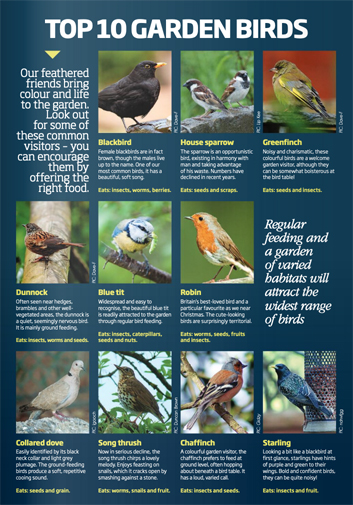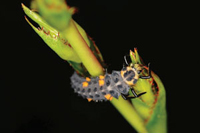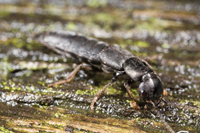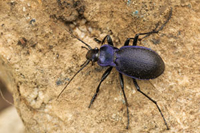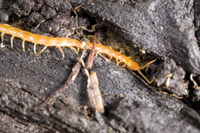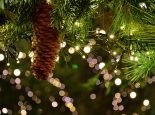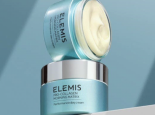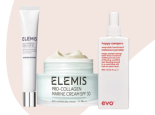Natural wonders | Space for Nature
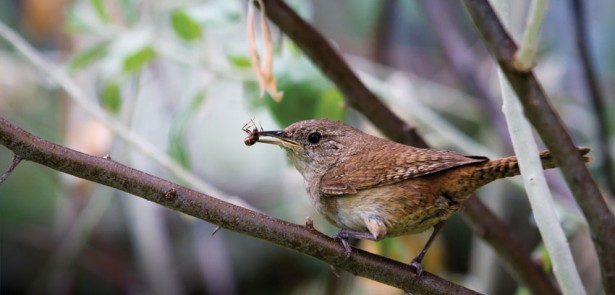
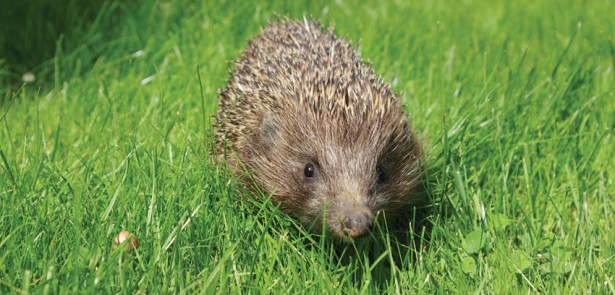
Make space for wildlife in your garden and you will be rewarded with sound, colour and an army of pest predators. Benedict Vanheems shares some ideas to help you make your space more attractive to nature’s marvels
Our gardens make up a substantial proportion of our crowded little island. With their tapestry of shrubs, flowering plants, lawns and trees, they can also be one of the most biodiverse areas, supporting a wide range of mammals, birds, insects, reptiles and amphibians. While we all enjoy whiling away the hours outside in our own little haven, how richer the experience if we share our private spaces with all the many wild visitors that inhabit the surrounding area? There’s no better sound than the gentle buzz of pollinating bees or the cheery chirping of our feathered friends. Who hasn’t spotted frogspawn and been delighted, or caught the eye of a nocturnal hedgehog scampering across the lawn and been filled with a sense of excitement?
Gardening with wildlife in mind doesn’t mean your garden has to become an overgrown wilderness, but it does mean sparing a thought for all the critters that call our gardens home or view it as a valuable pit-stop as they go about their daily activities. By creating a more wildlife-friendly space you will be encouraging a natural balance in the garden – a miniature ecosystem that will ensure pests never spin out of control. Wildlife-conscious gardeners work with nature and will always reap the benefits.
Space for nature
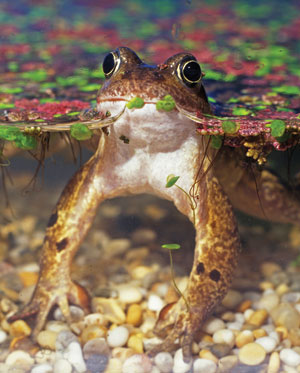 The key to encouraging wildlife is to provide a variety of habitats that different creatures can call home. If your garden has a number of shrubs, herbaceous plants and a lawn then you are already on your way – add a pond into the mix and you’re well away! Each of these habitats will be preferred by one creature or another, although you can always encourage even more visitors.
The key to encouraging wildlife is to provide a variety of habitats that different creatures can call home. If your garden has a number of shrubs, herbaceous plants and a lawn then you are already on your way – add a pond into the mix and you’re well away! Each of these habitats will be preferred by one creature or another, although you can always encourage even more visitors.
Letting your grass grow a little longer for winter will allow caterpillars to successfully overwinter so that later on in spring birds such as starlings can forage for these and other juicy grubs. Planting a mix of shrubs and flowers that are in bloom throughout the year means there will always be something for pollinating insects to enjoy, while a thick shrubbery provides a secluded place for birds to nest and shelter. Ponds offer a home for amphibians and valuable drinking water for all manner of animals – just make sure there is at least one sloping ‘beach’ so that any clumsy visitors can climb or slither their way out of the water should they fall in.
Home sweet home
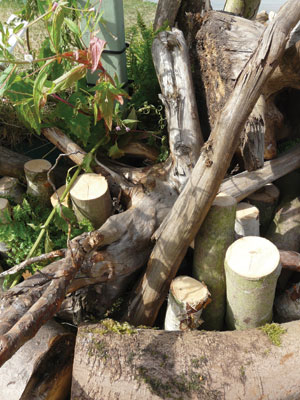 Every creature needs somewhere to breed, live and forage for food. In many instances it is easy enough to provide a home. Bat and bird boxes can be secured above the reach of cats, special insect houses will provide somewhere dry to nest, piles of leaves in a secluded corner will offer hedgehogs a home, while rotting logs are the ideal habitat for beetles. It can be tempting to make borders completely spic and span for winter, but this tidy up is best left until the very end of winter. Not only will all the old plant matter offer protection to wildlife during cold spells, it will gradually rot down to feed the soil. Old hollow stems, piles of leaves and other debris are vital habitat for insects, including aphid-munching ladybirds and lacewings.
Every creature needs somewhere to breed, live and forage for food. In many instances it is easy enough to provide a home. Bat and bird boxes can be secured above the reach of cats, special insect houses will provide somewhere dry to nest, piles of leaves in a secluded corner will offer hedgehogs a home, while rotting logs are the ideal habitat for beetles. It can be tempting to make borders completely spic and span for winter, but this tidy up is best left until the very end of winter. Not only will all the old plant matter offer protection to wildlife during cold spells, it will gradually rot down to feed the soil. Old hollow stems, piles of leaves and other debris are vital habitat for insects, including aphid-munching ladybirds and lacewings.
Make sure there is plenty of food around. Winter is a great time to feed garden birds, helping them to survive sometimes cruel weather when natural food can be hard to come by (remember last winter’s prolonged cold snap!). By creating habitat for insects you will in turn provide more foraging prospects for birds. Chicks and young birds especially need the very high protein diet that insects offer.
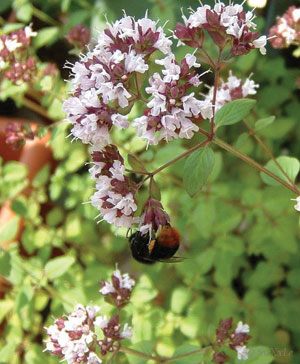 Don’t just concentrate on summer-flowering plants; the more spring and autumn bloomers you can include the better. These will provide nectar for emerging pollinators and again just before they go back into hibernation. Single flowers are usually better than double flowers, which all too often lack the nectar bees, hoverflies and other pollinators need. Nectar-rich annual additions include blue cornflowers, poppies, single dahlias, larkspur and gloriosa daisies. Consider also pot marigolds (calendula), herbs such as oregano and lavender, and bupleurum. Spring flowers include crocus, pulmonaria and comfrey. Many herbaceous plants and bulbs can be planted right now to give a good display next year.
Don’t just concentrate on summer-flowering plants; the more spring and autumn bloomers you can include the better. These will provide nectar for emerging pollinators and again just before they go back into hibernation. Single flowers are usually better than double flowers, which all too often lack the nectar bees, hoverflies and other pollinators need. Nectar-rich annual additions include blue cornflowers, poppies, single dahlias, larkspur and gloriosa daisies. Consider also pot marigolds (calendula), herbs such as oregano and lavender, and bupleurum. Spring flowers include crocus, pulmonaria and comfrey. Many herbaceous plants and bulbs can be planted right now to give a good display next year.
Berry or fruit-producing trees and shrubs are excellent sources of food for birds and mammals toughing it out over winter. If you have a fruit tree in your garden then it’s worth leaving a few fruits on the ground for the local wildlife to enjoy. In return they will keep garden pests in check once the weather warms up in spring.
Water world
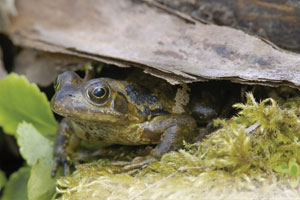 Any supply of water will help to draw in wildlife, but a pond is the ultimate venue for water-loving creatures. A well-designed pond will play host to a wide range of invertebrates such as pond skaters, dragonflies and water snails, as well as amphibians such as toads, newts and frogs. Make your pond more attractive to wildlife by ensuring a good mix of water plants, particularly around the pond’s edges. Thick, marginal plantings not only offer shelter but provide a place for frogs and toads to spawn. Most ponds will be naturally colonised, so there’s no need to introduce spawn from elsewhere, which risks transferring diseases.
Any supply of water will help to draw in wildlife, but a pond is the ultimate venue for water-loving creatures. A well-designed pond will play host to a wide range of invertebrates such as pond skaters, dragonflies and water snails, as well as amphibians such as toads, newts and frogs. Make your pond more attractive to wildlife by ensuring a good mix of water plants, particularly around the pond’s edges. Thick, marginal plantings not only offer shelter but provide a place for frogs and toads to spawn. Most ponds will be naturally colonised, so there’s no need to introduce spawn from elsewhere, which risks transferring diseases.
Back on dry land, many insects can be given a helping hand by introducing artificial homes. Lacewing, ladybird and solitary bee homes are readily available to buy. You can make your own insect des res by stacking piles of hollow stems, straw, twigs, cones and logs as tidily or haphazardly as you like. Lengths of bamboo canes or straw can be wrapped within a waterproof container such as a plastic drinks bottle sawn in half and hung from the branch of a shrub. Visit any of the horticultural shows and you’ll see just how smart some of the insect houses can be – pigeon-holed into neat wooden surrounds, they can become quite a feature of the garden.
Hedgehog guests
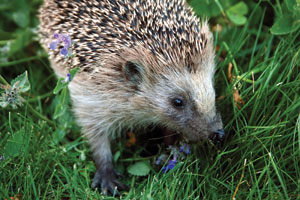 Hedgehogs are mostly nocturnal mammals and are a real treat to watch. They carry a keen appetite for caterpillars, slug and snails, making them the gardener’s best friend. You can encourage them by leaving some piles of leaves about the garden, particularly at the base of border plants, and by allowing a few areas of grass to grow longer than you might usually (a good excuse to ease up on the mowing!). Hedgehogs can be fed pretty much anything, but avoid milk and bread. Dog or cat food offered in times of drought is particularly welcome.
Hedgehogs are mostly nocturnal mammals and are a real treat to watch. They carry a keen appetite for caterpillars, slug and snails, making them the gardener’s best friend. You can encourage them by leaving some piles of leaves about the garden, particularly at the base of border plants, and by allowing a few areas of grass to grow longer than you might usually (a good excuse to ease up on the mowing!). Hedgehogs can be fed pretty much anything, but avoid milk and bread. Dog or cat food offered in times of drought is particularly welcome.
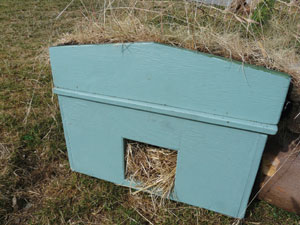 You can make your very own hedgehog box from plywood or an old, sturdy fruit box. The box should be about 60x40x30cm. Cut out an entrance hole into one corner of the box, a tad above ground level. Make this entrance 12x12cm in size. The box should have an overlapping, removable lid to keep the contents dry and allow cleaning out in the summer when the box isn’t in use. Now incorporate a small entrance chamber within the box (with a further entrance hole into the main nesting chamber). The entrance chamber should be about 23x40cm.
You can make your very own hedgehog box from plywood or an old, sturdy fruit box. The box should be about 60x40x30cm. Cut out an entrance hole into one corner of the box, a tad above ground level. Make this entrance 12x12cm in size. The box should have an overlapping, removable lid to keep the contents dry and allow cleaning out in the summer when the box isn’t in use. Now incorporate a small entrance chamber within the box (with a further entrance hole into the main nesting chamber). The entrance chamber should be about 23x40cm.
Place your hedgehog box in a quiet place with the entrance hole facing away from prevailing winds. Ideally the entrance should lead out into thick vegetation. Avoid disturbing the hedgehog house once it’s in position. Don’t worry if it doesn’t get colonised immediately – it may take up to a year and, if natural conditions in the area are perfect, it may never be colonised.
So as you go about your autumn clear up, spare a thought for our native wildlife. Leave a little space for the many creatures that inhabit our gardens and contribute your part to protecting the valuable natural heritage that we are so lucky to have.
Know your bugs
Many insects in the garden provide an invaluable service. All of the following are voracious pest predators.
This is the larva of the ladybird and it is a very welcome sight indeed! Each larva can munch its way through up to 500 aphids.
The adults and larvae of the carnivorous rove beetle scour the soil for nuisance grubs, slugs and insects.
Like the rove beetle, the ground beetle consumes plenty of slugs, but also aphids and caterpillars. They tend to be seen at night.
Centipedes can be identified by the fact they have just one pair of legs per segment of body (unlike millipedes). They eat plenty of insects.
Know your birds
